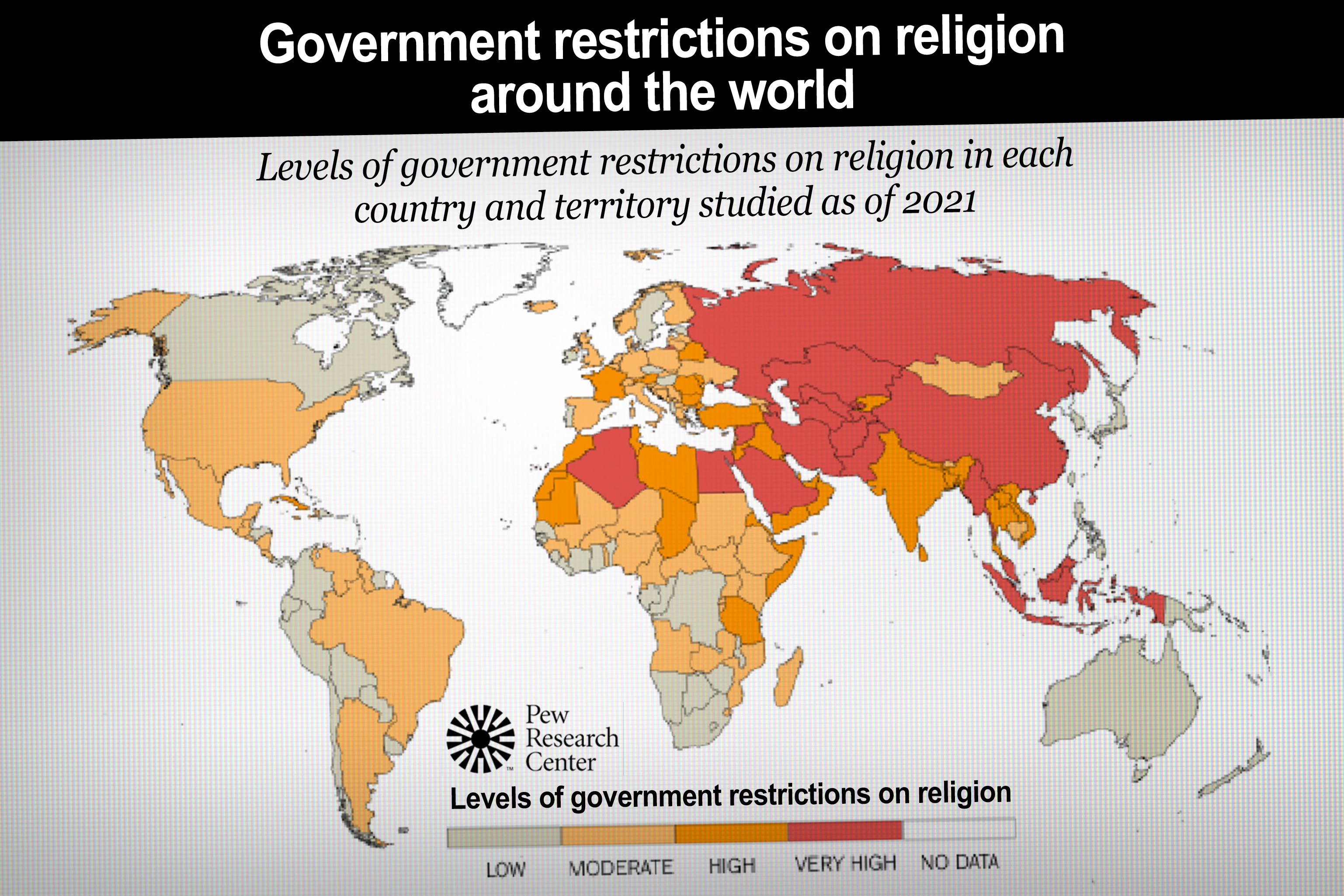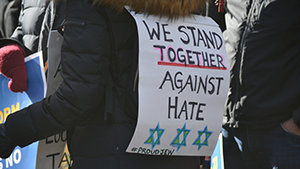
-
HOME
-
WHAT IS STANDOur Mission Our Values Our Help Contact
-
WHAT WE FIGHT FORReligious Freedom Religious Literacy Equality & Human Rights Inclusion & Respect Free Speech Responsible Journalism Corporate Accountability
-
RESOURCESExpert Studies Landmark Decisions White Papers FAQs David Miscavige Religious Freedom Resource Center Freedom of Religion & Human Rights Topic Index Priest-Penitent Privilege Islamophobia
-
HATE MONITORBiased Media Propagandists Hatemongers False Experts Hate Monitor Blog
-
NEWSROOMNews Media Watch Videos Blog
-
TAKE ACTIONCombat Hate & Discrimination Champion Freedom of Religion Demand Accountability
Number of Governments That Restrict Religions at an All-Time High, Pew Study Shows
A recent Pew study has brought to light a deeply concerning trend: Government restrictions on religion have reached an unprecedented high worldwide. The research center, which has surveyed such restrictions since 2007, includes in its findings countries with laws, policies and conduct that target and limit faith-related beliefs and practices.

The survey, which covers 2021—the most recent year for which data is available—paints a concerning picture, revealing that religious groups faced harassment by 183 governments, an all-time high. Moreover, 28 percent of those 183 governments registered “high” or “very high” levels of government restrictions. In 163 countries, this harassment even extended to governmental interference in worship. According to Pew, interference in worship “includes laws, policies and actions that disrupt religious activities, the withholding of permits for such activities, or denying access to places of worship” as well as “burial practices and conscientious objection to military service for religious reasons.”
“Research shows that as governments put more restrictions on the free practice of religion and belief, conflict and violent persecution are the result.”
Since 2007, the number of countries where governments have harassed religious groups has increased from 118 in 2007 to 183 in 2021, while government interference in worship has jumped from 112 nations to 163.
Pew broadly defines government harassment as offenses ranging from physical force against religious groups to disparaging comments by government officials. Harassment also covers state policies and laws attacking specific faith groups or hindering or blocking religious practice.
The Pew study’s findings are not confined to a few isolated cases. They reveal that 92 percent of the countries analyzed—across all five regions covered in the study—have reported instances of government harassment. This includes each of the 20 nations in the Middle East-North Africa region, 43 of the 45 European countries, 33 of the 35 countries in the Americas, 44 out of 48 sub-Saharan African nations, and 43 of the 50 countries in the Asia-Pacific region.
The study also surveyed how many governments simultaneously provided benefits—such as funds for religious buildings, education and clergy—to certain religious groups and placed restrictions on others, or even provided benefits to the same religious groups it placed restrictions on. One hundred sixty-one countries provided at least some benefit to religious organizations or clergy. Still, 149 of those same countries also harassed faith groups.
The researchers point to this statistic as an indicator of the complex relationship between governments and religious groups. They write in their report, “Our data did not allow us to discern why countries grant benefits to religious groups, for example, whether governments hope that paying the salaries of clergy will lead those clergy to deliver sermons that align with government views. So, we cannot say whether specific governments are attempting to manipulate, entice or co-opt religious groups with incentives.... For example, it shows that some governments that provide benefits to clergy also, at the same time, seek to restrict and control these clergy—for example, by directly restricting what they can say in sermons.”
Brian Grim, Founding President of Religious Freedom & Business Foundation, commented on the Pew survey results: “Research shows that as governments put more restrictions on the free practice of religion and belief, conflict and violent persecution are the result. Research also shows that when the restrictions become harassment and interference, they also become a drag on the economy. However, when restrictions are low, not only is peace and prosperity possible, but also this is associated with a bundle of social goods.”
Though government restrictions reached a peak in 2021, the study included another statistic—the global level of social hostilities involving religion, such as mob violence, terrorism, and hostilities over religious conversions or the wearing of religious symbols and clothing.
That median global level, unlike government restrictions, went down to its lowest index in four years—1.6 on a 10-point scale—a hopeful trend.






